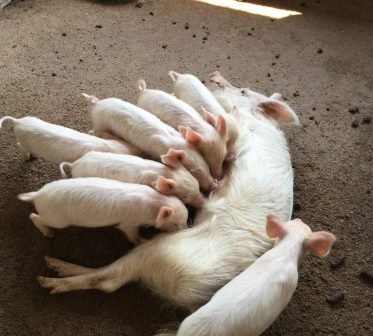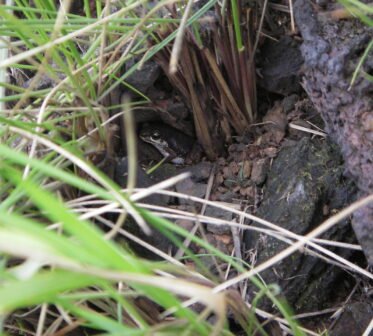Background
The Nimba Mountains host extraordinary biodiversity, including important aquatic vertebrate and invertebrate species, such as otter shrews and threatened fishes and crabs. Establishing effective monitoring is an essential first step in understanding the populations and their trends around the Guinean Nimba Mountains.
In recent years, the power and pace of biological surveys have improved as technologies advance. SMFG aims to enhance its monitoring of biodiversity by complementing traditional surveys methods with emerging technologies. A powerful new way of monitoring aquatic species is to collect environmental DNA (eDNA) from water bodies. Tiny quantities of DNA are released into stream water by organisms through faeces, saliva and other means. This eDNA can be recovered by filtering this water and identifying species by high-throughput DNA sequencing and comparison against known DNA sequences from the region. This process is known as “eDNA metabarocding”. It has been shown to outperform traditional biodiversity assessment methods in a wide range of temperate and tropical habitats.
Environmental DNA programme
SMFG is launching a multi-year monitoring programme in collaboration with the UK-based eDNA company NatureMetrics, and taxonomic specialists like Dr Ara Monadjem (African small mammal specialist, Eswatini) and Dr Allassane Ouattarra (Professor of Aquatic Biology, Université Nangui Abrogoua, Abidjan). Through this monitoring project, they will:
- Collect samples of eDNA from Nimba’s streams,
- Generate biodiversity data for large survey areas across multiple taxonomic groups,
- Validate DNA-based results with taxonomic expertise, and
- Compare the fish species data obtained from eDNA with that from traditional methods.
First, tissue samples were collected from key species captured around the Nimba Mountains that did not already have a sequence in the reference library, and new reference sequences were generated. Next, an eDNA survey for vertebrates was conducted, which revealed the presence of many species across the Nimba Mountains’ streams. Important fish species detected by the eDNA survey included Rhexipanchax nimbaensis (Mt Nimba lampeye) and Doumea chappuisi, which are classed as ‘vulnerable’ on IUCN’s Red List. Almost every fish species’ record from the earlier conventional surveys was matched in the eDNA survey. At most sites, eDNA detected additional species, too.
As of mid-2020, beyond fish, the eDNA data had delivered records also of 14 species of amphibians, 19 of birds, and 19 of mammals, including shrews, rodents, carnivores, monkeys and even bats. One reptile – the West African mud turtle (Pelusios castaneus) – was detected.
SMFG intends to launch long-term eDNA monitoring of stream water, expanding it to include additional taxa like crustaceans, as follows:
Fish – SMFG will monitor Nimba’s diverse fish including cryptic and threatened species like Barbus cf. huguenyi and Chrysichthys cf. teugelsi, both classified as endangered (EN), which are poorly studied and whose population trends are unknown. Monitoring these species is vitally important to allow reliable evidence-based decisions and management measures.
Mammals – By extending the eDNA surveys, SMFG hopes to detect the presence of important mammals like chimpanzees and the Nimba otter shrew (Micropotamogale lamottei). The latter is a small amphibious, carnivorous mammal thought to feed mainly on crustaceans, fish and other aquatic fauna. It is known from the Nimba Mountains and surrounding aquatic habitat, as well as forested areas in Guinée Forestière and south-eastern Liberia. The Nimba otter shrew is classified as VU by IUCN, with decreasing populations, and is cited in the Nimba World Heritage Site’s declaration of outstanding universal value. It lives in low densitiesin aquatic habitats and has proven very difficult to study with traditional trapping methods.
Crustaceans – Now that Nimba’s crabs have been genetically assayed, it is hoped their monitoring via eDNA will significantly improve SMFG’s ability to describe, map and monitor their species and habitats. The Nimba Mountains are home to a diverse array of crab species, many of which are threatened, and endemic or near endemic to the Nimba region like Liberonautes lugbe (CR), L. nimba (VU) and L. rubigimanus (EN). They are found in both lowland streams and wetlands, as well as in rivers on the Nimba Mountains.
To learn more about environmental DNA and real-world applications of this technology, see NatureMetrics’ webinar series at www.naturemetrics.co.uk/webinars.



